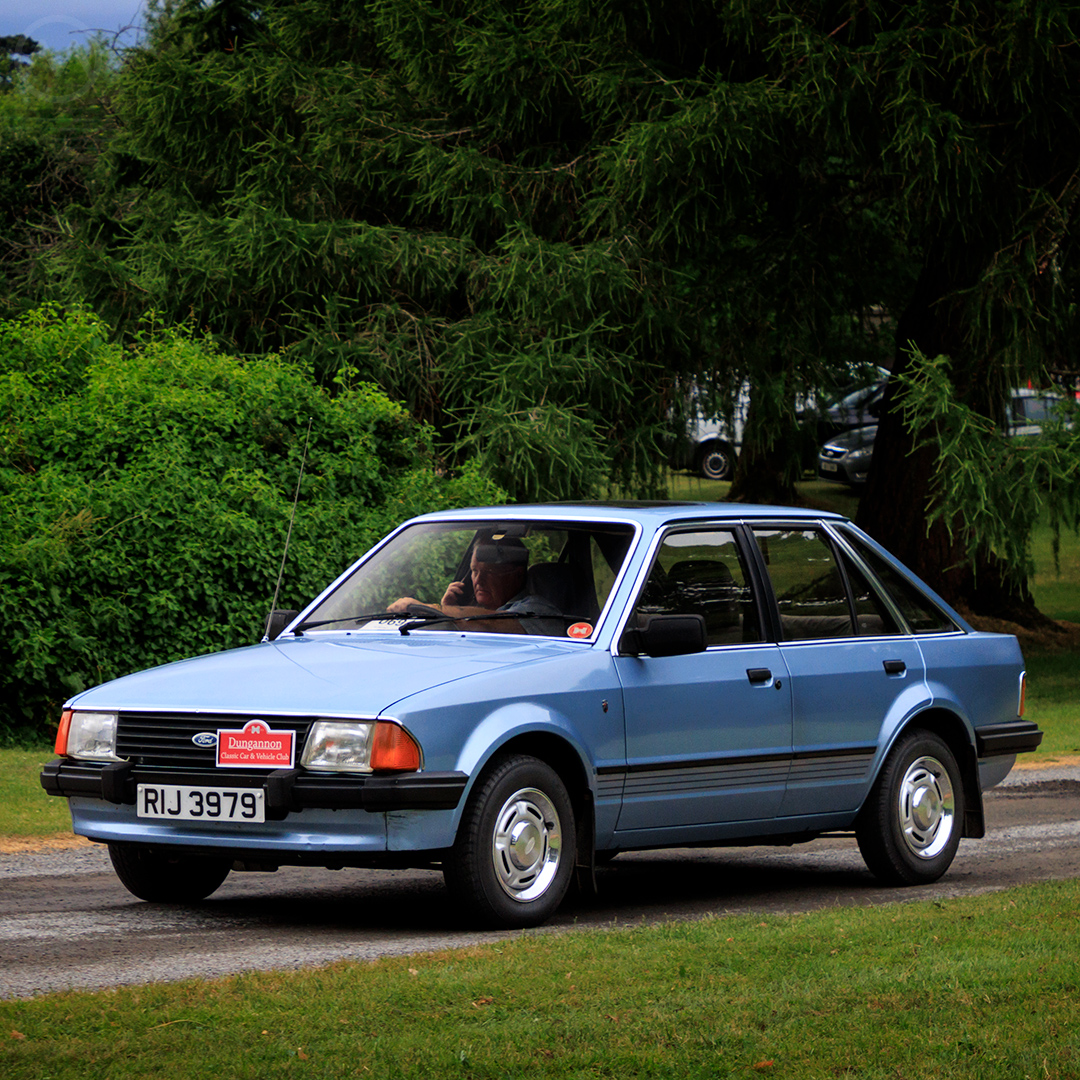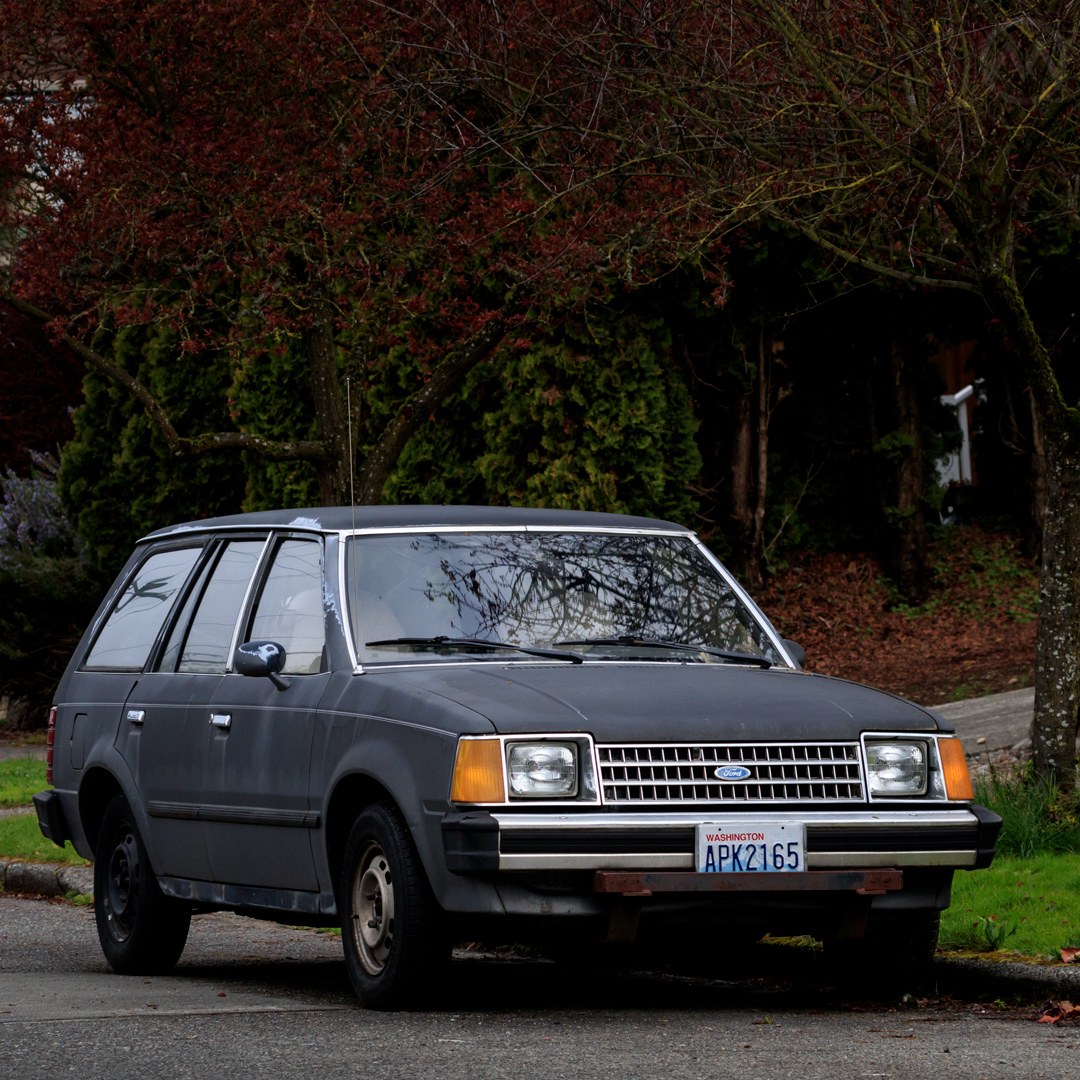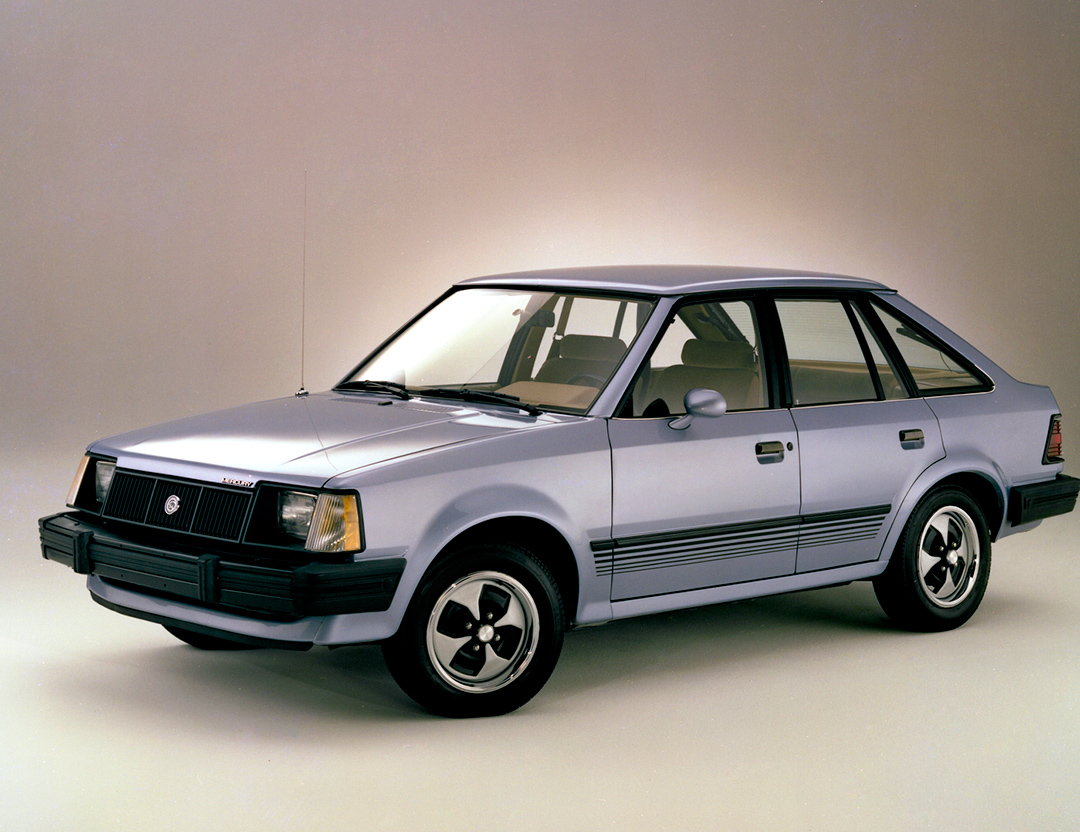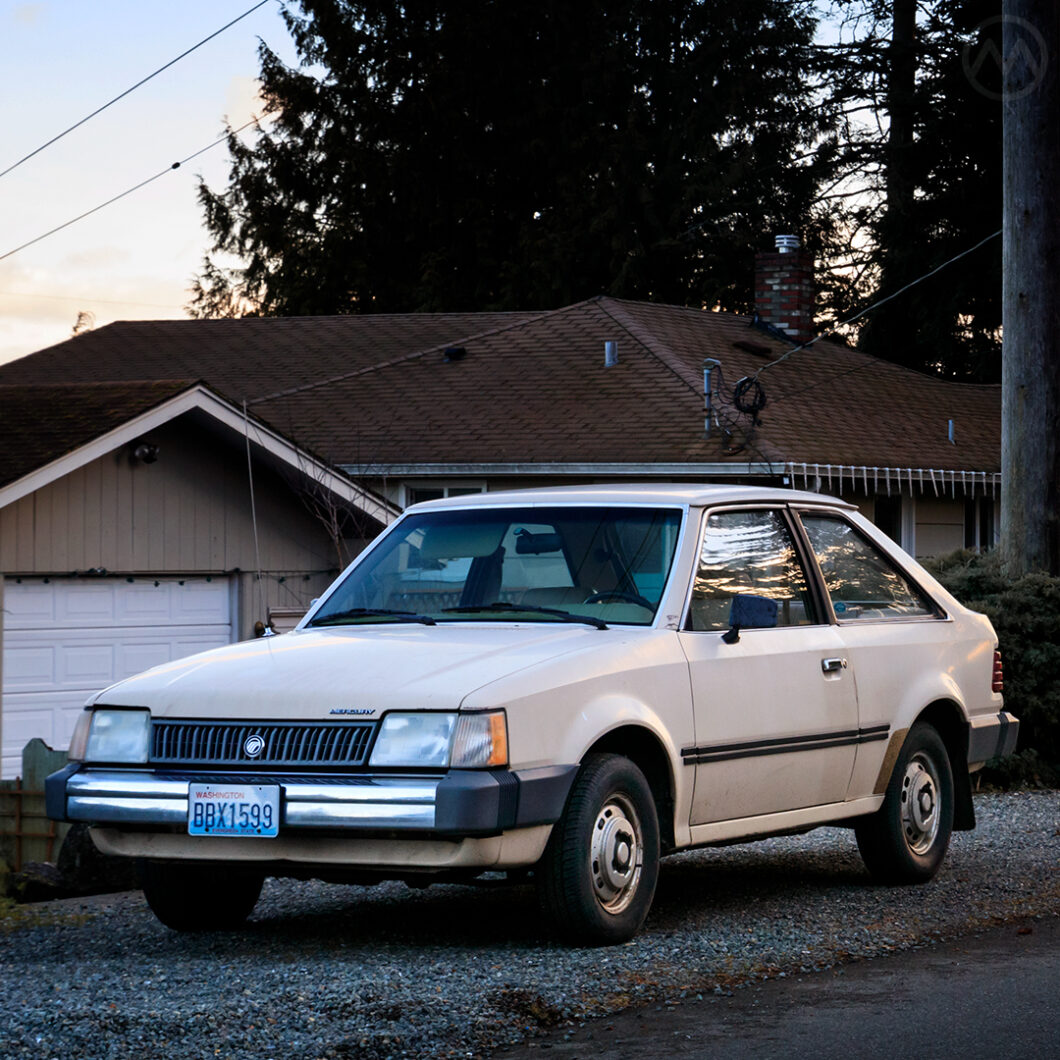Oil prices cratered in the mid-1980s, but the effects of two successive gas crises freaked Americans out enough for them to line up for Ford’s first American Escort all through the decade. That anxiety helped make the Escort the best-selling car in America in 1982, 1987, and again in 1988. In the shadow of that success, however, was the car’s badge-engineered twin, the Mercury Lynx.
The Lynx was the first front-wheel drive car from Ford’s middle-class brand, but only because American Fords had never been front-drive up until that time. The Escort and Lynx followed up the unplanned stateside success of the Fiesta, but in the late 1970s, as late Ford designer Gail Halderman would later relate, Ford’s American engineers were belatedly scrambling to convert most of the lineup to something more European.
There’s a certain irony in that because former Ford Engineer Hal Sperlich had been shown the door by Henry Ford II in 1977 for pushing too hard for smaller front-drive cars. It was the opening salvo of a self-destructive executive purge that ultimately led to Lee Iacocca’s dismissal a year later. HF II retired in 1979, when the U.S. operations were losing money hand over fist, and the international side was generating all the black ink.
Front Drive Fords, Finally
One of those small front-drive projects had actually happened, the Mk1 Ford Fiesta. The little car had been a risky ground up project designed to respond to the Renault 5 and Fiat 127, which undercut the circa-1968 European Escort Mk1 and were therefore siphoning off potential customers.
Sperlich and future Ford boss Alex Trotman were prime movers on the Fiesta project. Even late in the game, Ford was not really sure it would get built (or come to the U.S.), but OPEC 1 sealed the deal. Even before the Fiesta went into production, however, work began on scaling it up into something that could compete with Volkswagen’s new Golf.
This new car was “Project Erika,” and it would not be ready until 1980. When it debuted, the idea was to replace both the aging (and troubled) Pinto in North America and the Mk2 European Escort with one single “World car” design, mostly executed by Ford’s German design teams in Cologne.
The Fiesta had been adapted for American sale to great success, but it was a little too small for most Americans. This next car would be much more important and would be built, not just sold, in North America. It was at this point that a schism developed in the Erika plan.

Lost in Translation
In Europe, design teams led by Uwe Bahnsen and Klaus Kapiza created a sharp-suited, angular hatchback family on a totally new chassis. It featured the familiar front MacPherson struts and a new independent rear suspension, a whole new engine family, and plenty of quality touches. The European Mk3 Escort was a gem to drive and nice to look at. It would also eventually spawn some truly fantastic hot hatches.
Because the car would be built entirely separately in North America, with a different supply chain and in very different pants, Dearborn’s teams wanted to tailor their version more to American tastes. That’s exactly what they did, which was good and bad. The American versions would be cheaper to build, use cheaper materials, have softer suspensions, and many other design changes.
The differences were so extensive that the American Escort Mk1 was essentially a different car even if it looked faintly similar and shared a few components. It was bigger, heavier, and less nimble to drive despite using generally larger engines. Somehow, the American car gained 10 inches of length despite but had no more room than the Euro versions, though its huge impact bumpers did help protect it better.
At the heart of the two Escorts was the “CVH” engine, the name standing for “Compound Valve angle Hemispherical.” Having driven many of these Escorts, the CVH was fairly powerful for an early eighties American small car, but it was often dubbed “Considerable Vibration and Harshness,” and not unfairly.
The only version shared between them was the basic 1.6-liter CVH, but even then, the American version had cast iron pistons and rods instead of alloy ones, and a much more restrictive cylinder head design to reduce emissions. While European Escorts also got 1.1 and 1.3-liter CVHs and a 1.6-liter diesel, the 1.6 was the American-spec base engine. The 1.3-liter was contemplated for America, but it couldn’t pass emissions, so it never went into production. Later on, it got a 1.9-liter CVH and a 2.0-liter Mazda diesel four, both options never seen in Europe.

The Mercury Lynx
Mercury was originally Edsel Ford’s clever way of filling the chasm between workaday Fords and high-flying Lincolns, but both Edsel and the various periods of design independence Mercury went through were long forgotten by 1981. That spring, the Escort and Lynx were launched for Americans and Canadians. As the (U.S. Mk1) Escort replaced the Pinto, so too did the Lynx replace that car’s badge-engineered twin, the Bobcat.
In keeping with Mercury’s then-lengthy tradition of fancified Fords, the Lynx had slightly nicer interior trimmings and a different grille but not too much else to distinguish itself from the Escort. It typically cost $100 to 150 more than its Ford equivalent but was sold through fewer dealers. It shared the Escort’s 1.6- and later 1.9-liter CVH engines and the Mazda diesel that came too late to help with the fuel crisis, but the diesel was rarely ordered. Since it was so similar to the Escort and cost more, the Lynx immediately had trouble standing out.

The Escort quickly became a sales juggernaut, and it remains one of the most popular small cars ever sold exclusively in North America. It’s the only car of its size to have ever topped the U.S. sales charts, becoming the best-selling car in America in 1982 and then again in 1987 and 1988. The Lynx surfed on some of that popularity, but the Escort outsold it by 6:1 even in a good year for Mercury sales.
In a nod to the car’s European cousins, the sportier versions of the Lynx were dubbed RS and then XR3, just as there were XR3i and RS versions of the European “Erika.” These two cars roughly corresponded to the initial U.S. Escort SS (a name quickly dropped after complaints from Chevrolet) and Escort GT. They were decently quick by U.S. hot hatch standards in the mid-1980s, but nowhere near as light and lithe as the European Escort RS—there’s a reason the European model ends up in games like Forza Horizon while the American GT does not.
In mid-1985, both the U.S. Escort and the Mercury Lynx got a facelift with “aero look” front ends and flush headlamps, but that was the last update for the Mercury. In 1987, it was dropped to make way for an entirely different type of international badge-engineering job, the Mercury Tracer. Where that car came from depended on the body style buyers chose, but all were rebadged Mazda BF Familias, primarily built in Ford’s new factory in Hermosillo, Mexico.
The car at the top of the post is a very late Lynx from 1986.


Lynx wagon was very disappointing.